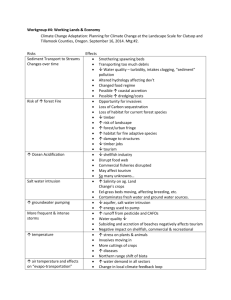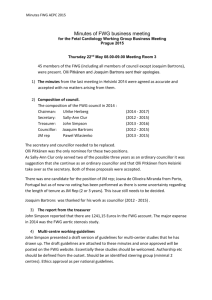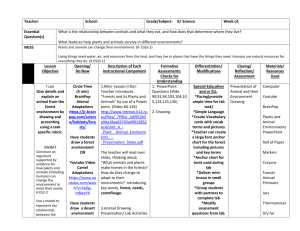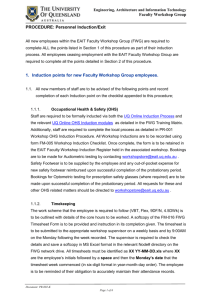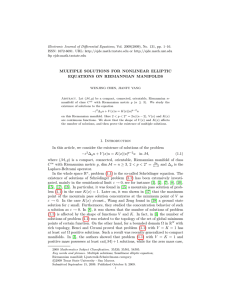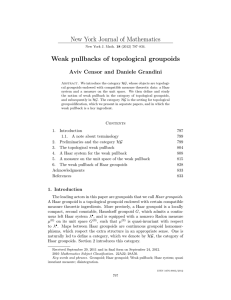Fwg 11-7-12 minutes - Chesapeake Bay Program
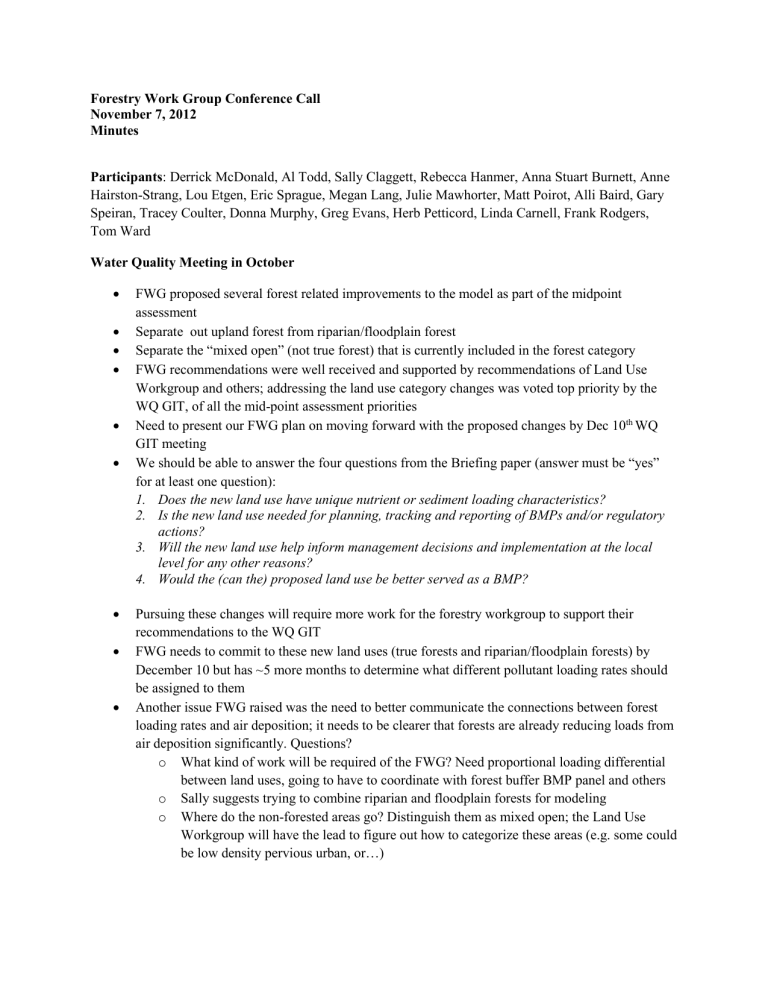
Forestry Work Group Conference Call
November 7, 2012
Minutes
Participants : Derrick McDonald, Al Todd, Sally Claggett, Rebecca Hanmer, Anna Stuart Burnett, Anne
Hairston-Strang, Lou Etgen, Eric Sprague, Megan Lang, Julie Mawhorter, Matt Poirot, Alli Baird, Gary
Speiran, Tracey Coulter, Donna Murphy, Greg Evans, Herb Petticord, Linda Carnell, Frank Rodgers,
Tom Ward
Water Quality Meeting in October
FWG proposed several forest related improvements to the model as part of the midpoint assessment
Separate out upland forest from riparian/floodplain forest
Separate the “mixed open” (not true forest) that is currently included in the forest category
FWG recommendations were well received and supported by recommendations of Land Use
Workgroup and others; addressing the land use category changes was voted top priority by the
WQ GIT, of all the mid-point assessment priorities
Need to present our FWG plan on moving forward with the proposed changes by Dec 10 th WQ
GIT meeting
We should be able to answer the four questions from the Briefing paper (answer must be “yes” for at least one question):
1.
Does the new land use have unique nutrient or sediment loading characteristics?
2.
Is the new land use needed for planning, tracking and reporting of BMPs and/or regulatory actions?
3.
Will the new land use help inform management decisions and implementation at the local level for any other reasons?
4.
Would the (can the) proposed land use be better served as a BMP?
Pursuing these changes will require more work for the forestry workgroup to support their recommendations to the WQ GIT
FWG needs to commit to these new land uses (true forests and riparian/floodplain forests) by
December 10 but has ~5 more months to determine what different pollutant loading rates should be assigned to them
Another issue FWG raised was the need to better communicate the connections between forest loading rates and air deposition; it needs to be clearer that forests are already reducing loads from air deposition significantly. Questions? o What kind of work will be required of the FWG? Need proportional loading differential between land uses, going to have to coordinate with forest buffer BMP panel and others o Sally suggests trying to combine riparian and floodplain forests for modeling o Where do the non-forested areas go? Distinguish them as mixed open; the Land Use
Workgroup will have the lead to figure out how to categorize these areas (e.g. some could be low density pervious urban, or…)
o What kind of work do we need to do? Some redistribution of loading will occur, but what we hope happens is that there is more recognition of the value of the conservation of these lands. o Peter Claggett (USGS and Land Use Workgroup) will be the lead for the mapping work that is needed for these changes o We should carefully consider what should be a change in land use vs. BMP
Look at the paper Sally developed for the WQ GIT meeting as a good starting point (posted online)
Remote Sensing to Characterize Connectivity: Megan Lang, USFS (Megan’s PowerPoint is posted on the FWG website)
Comments:
Need to have more discussion on functioning of floodplains and riparian areas and how to map them
Case study presented: Choptank watershed is one of the most polluted
We need to know where the best managed forested floodplains are located
NHD stream maps are inaccurate and we need to better understand these limitations
Use LiDAR because it can help map wetlands and surface water channels
Channelized streams cannot respond as well to floods and they remove water from wetlands
Ditches can bypass floodplains
SAR: Synthetic Aperture Radar, can discern saturation, can be used to determine soil moisture
SAR + LiDAR = synergy: they can be used together
Some of these data could be used to support the Bay Model
Questions: o Have you tried other geographic provinces? Starting to do this in other areas
Several characteristics to consider for mapping to target placement of effective riparian forest buffers for water-quality improvement: Gary Speiran, USGS (Gary’s PowerPoint is posted on the
FWG website)
Comments:
Hydrologic characteristics are important because they determine the pathways for contaminant transport
Don’t have a clear understanding of the groundwater system
Placement and location of buffers is critical
Hydrology is different in karst, carbonate systems
Stream flow is related to precipitation levels and groundwater flow
Contaminants are only removed from forest buffers when the contaminants are transported through the buffer
Discussion
Do deeper, slower flow paths result in denitrification? Depends on underlying bedrock, groundwater systems are deeper than roots, so buffers are more effective for surface runoff and shallow groundwater flow
Need to be able to map it, what is available for mapping? Need to know how much groundwater vs. surface water is feeding streams
Will take these issues up at the expert panel level and may inform how we differentiate floodplains and upland forests and how their function changes in different settings
What is the use of increased accuracy? How does this improved mapping help us? It helps us to improve targeting more effective buffers. In the Bay Model, we are trying to assign removal efficiency, and all buffers aren’t equal, so it helps us do this better. We are trying to get higher incentives in these areas as well.
Different tree species have different rooting depths, so including deep rooting species in planting mixes could help, and need sub-soiling
Announcements
Sally: we will postpone the programmatic review on Dec 4-5 until February or March. Will have a conference call on Dec 5 th instead, and will discuss the 2013 work plan.
Anne Hairston-Strang: MD has some new grants to discuss with the FWG in the next meeting when there is more time for announcements.
Rebecca: send announcements to Anna Stuart to send to the group.


